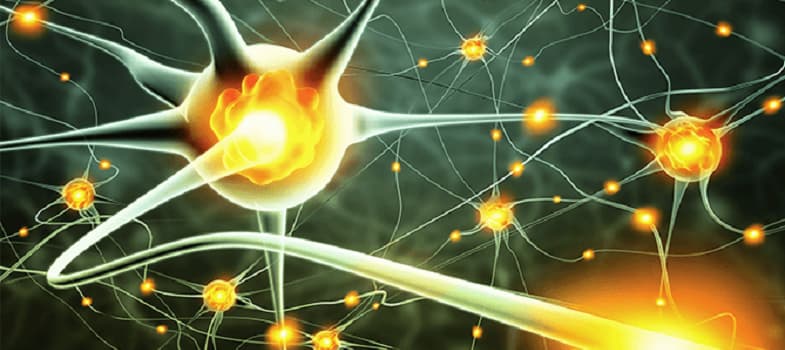What Is A Nerve Conduction Study?
A nerve conduction study, also referred to as a nerve conduction velocity test, is a diagnostic procedure that is performed in order to evaluate how fast an electrical signal can travel along a nerve as well as how strong the signal is. The purpose of a nerve conduction study is to determine whether nerve destruction or damage has previously occurred. Nerve damage may indicate the presence of a muscular or nerve disease or a traumatic injury. This test is usually performed along with electromyography (EMG), which is a diagnostic test that assesses a nerve’s ability to transmit electrical signals to muscles and how well the muscles respond. Both of these procedures are used to help physicians evaluate the presence of a nerve or muscular disease, its location if a disease is present, and the extent of its progression.
Imaging technology such as computed tomography (a CT scan) or magnetic resonance imaging (MRI) is often initially performed when nerve damage such as a pinched nerve or nerve root is suspected. However, certain types of nerve damage cannot be seen on an MRI or CT scan. This often causes nerve-related health problems to be misdiagnosed or undiagnosed. Furthermore, MRIs and CT scans are time consuming and costly procedures that do not always provide physicians with accurate information regarding nerve and muscular conditions. Research indicates that when a nerve-related problem or disorder is suspected, a thorough medical evaluation should include a nerve conduction study. Furthermore, this type of diagnostic test, especially in combination with electromyography, has been shown to be the most reliable and accurate in terms of diagnosing muscular and nerve diseases.
How Is A Nerve Conduction Study Performed?
Electrode patches are applied to the surface of the skin at different locations where the targeted nerves are located. A mild electrical pulse is transmitted from each electrode patch in order to stimulate the nerves. A second set of electrodes are attached to the skin some distance away from the stimulatory electrodes in order to record the activity and provide a measurement of the strength and speed of the signals as they travel between the electrodes. This procedure is repeated for every nerve that is being evaluated.
Nerves that are functioning normally transmit strong, fast signals. However, an abnormal reading such as a decrease in speed and strength as the signal travels along a nerve indicates the presence of nerve disease. It may also indicate that an excessive amount of pressure is being placed on the nerve (e.g., pinched or compressed nerve).
The electrical pulses that are emitted from the electrode patches will feel like a mild electrical shock and if the pulse is somewhat strong, it may cause minor pain or discomfort. However, no pain should be felt once the study has been completed. Electromyography is usually performed directly after the nerve conduction study.
During the nerve conduction study, the patient has to remain at room temperature because being too cold causes nerve signals to travel slower than usual. Individuals who have an implantable defibrillator or a pacemaker may not be able to undergo this test, but special precautions can also be taken if a physician deems that the study is necessary.

Conditions Related To A Nerve Conduction Study
There are certain symptoms that generally prompt a physician to order a nerve conduction study. These include general muscle weakness, cramping, or pain and burning, tingling, and numbness. A patient may also complain of discomfort, sharp pain, or reduced mobility in a specific region of the body such as the back, a particular joint (e.g., the wrist), or the fingers. In such cases, the electrodes are only attached to the region of interest. In addition, individuals may demonstrate impaired reflexes or sensory problems with touch or temperature. All of these types of symptoms generally warrant an evaluation through a nerve conduction study.
Abnormal test results usually indicate the presence of one of the following three problems:
- Axonopathy
- A conduction block
- Demyelination
Axonopathy refers to damage that has occurred to the long section of a nerve cell. This hinders an electrical signal from properly traveling along the nerve. A conduction block means that there is a blockage along the pathway of the nerve that is disrupting signal transmission. Demyelination refers to damage or the loss of the insulation that surrounds the nerve cell. The insulation promotes the transfer of the electrical signals along nerves and damage to the insulation can dramatically reduce a nerve’s ability to transmit signals.
In addition, conditions that may be either diagnosed or ruled out based on the results of a nerve conduction study include:
- Lambert-Eaton syndrome
- Myasthenia gravis
- Myopathy
- Alcoholic or diabetic neuropathy
- Nerve dysfunction (e.g., cervical radiculopathy)
- Carpal tunnel syndrome
- Traumatic nerve injury
- Spinal cord injury
- A herniated disc
Conclusion
A nerve conduction study is a diagnostic test that is performed to assess the strength and speed of electrical signals that travel along nerves. It is usually performed along with electromyography in order to determine if a patient is suffering from muscular or nerve disease. The procedure involves the use of electrode patches that emit a mild electrical pulse to stimulate the nerves of interest and to record how quickly the signals travel to different points and well as the signal strength. The electrical pulse feels like a mild electrical shock to patients, but it does not cause any long-term pain or damage.
Currently, a nerve conduction study is a standard procedure that is used to evaluate specific types of nerve damage or diseases as well as the extent of disease progression so that a physician can recommend an appropriate form of treatment.
References
- Raji P, Ansari NN, Naghdi S, Forogh B, Hasson S. Sensory nerve conduction studies in carpal tunnel syndrome. NeuroRehabilitation. 2014; in press.
- Warabi Y, Yamazaki M, Shimizu T, Nagao M. Abnormal nerve conduction study findings indicating the existence of peripheral neuropathy in multiple sclerosis and neuromyelitis optica. Biomed Res Int. 2013; 2013:847670.
- Pawar S, Kashikar A, Shende V, Waghmare S. The study of diagnostic efficacy of nerve conduction study parameters in cervical radiculopathy. J Clin Diagn Res. 2013 Dec;7(12):2680-2.
- Ajeena IM, Al-Saad RH, Al-Mudhafar A, Hadi NR, Al-Aridhy SH. Ultrasonic assessment of females with carpal tunnel syndrome proved by nerve conduction study. Neural Plast. 2013;2013:754564
- Weisman A, Bril V, Ngo M, Lovblom LE, Halpern EM, Orszag A, Perkins BA. Identification and prediction of diabetic sensorimotor polyneuropathy using individual and simple combinations of nerve conduction study parameters. PLoS One. 2013;8(3):e58783.


